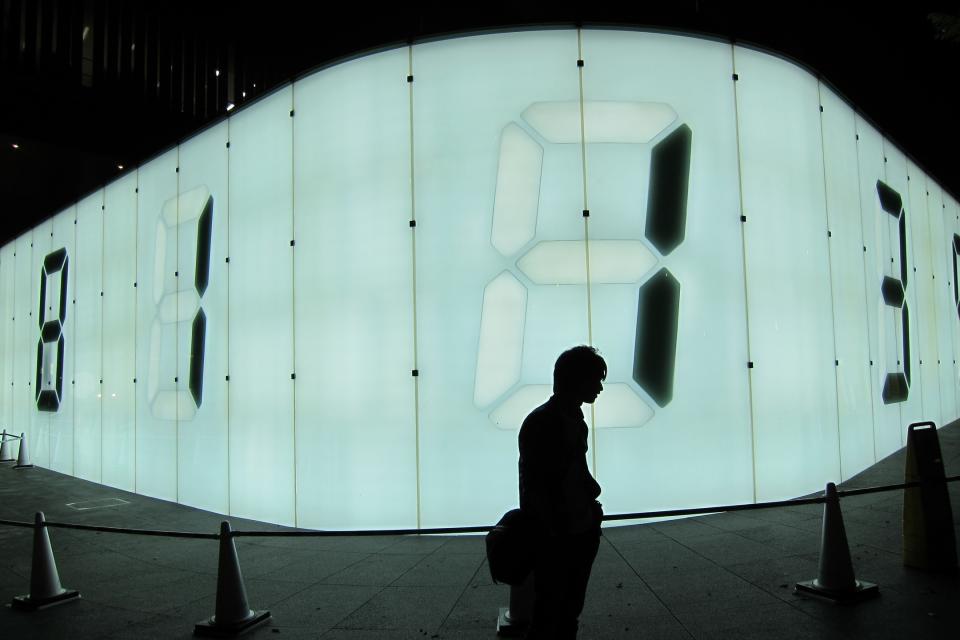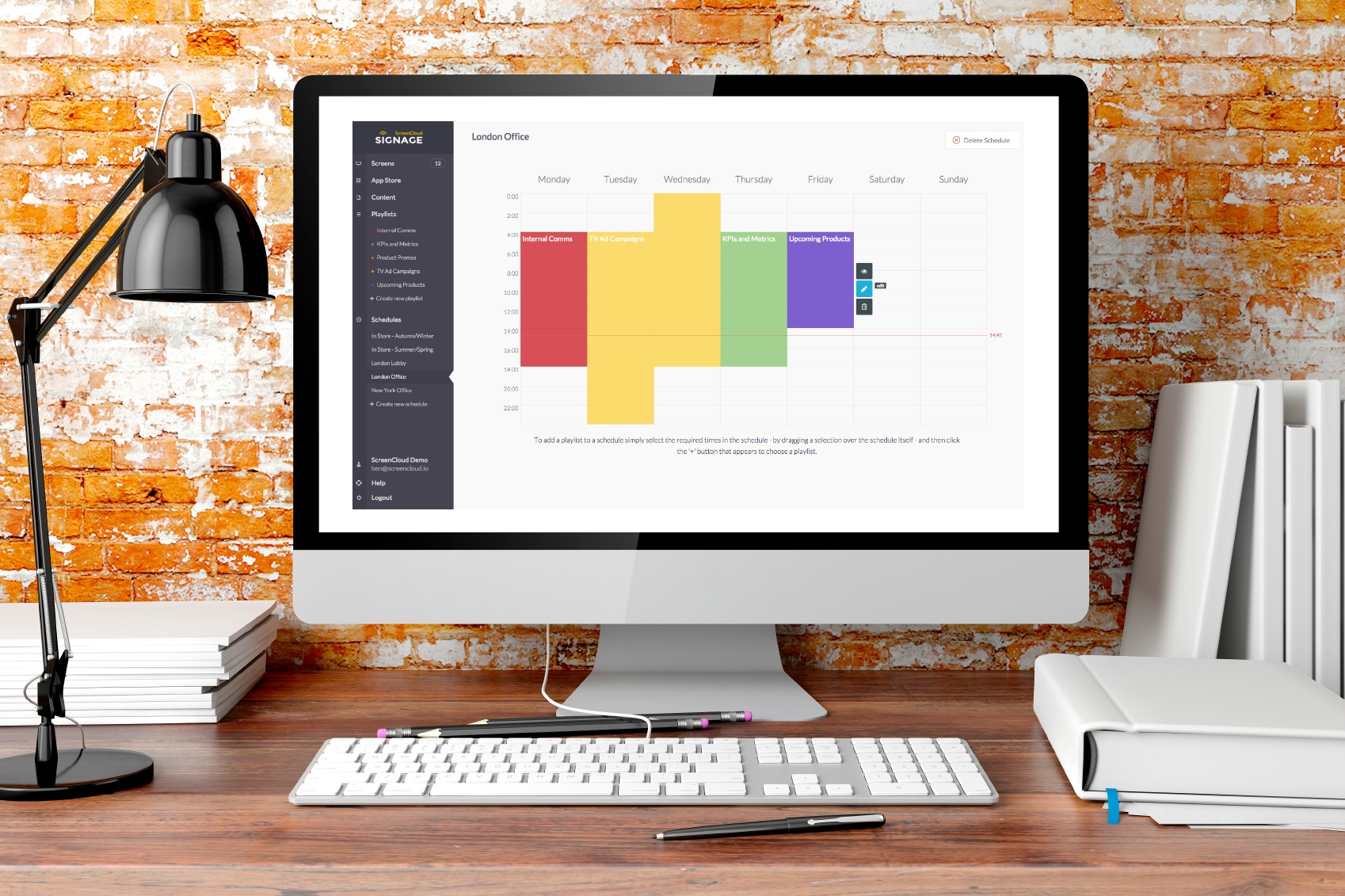
Six Tips On Creating Effective Playlists For Digital Signage
June 1, 2016 by guest author, Neil Rieger

Guest Post: Mark McDermott, ScreenCloud
Personalization has long been recognized as the key to cutting through noise in our over-saturated digital world.
In digital signage, where you have just seconds to grab attention against the passer-by’s friends, iPhone or work schedule, it’s even more crucial.
Let’s say your audience is in the 50-65 year-old cohort. You’ve thought about making your font size larger, your messaging clearer and your colours complementary, so as that the eye can read them more easily and from further away. You’ve placed your screens and tablets lower down, to account for height.

Mark McDermott
You watch in glee as your audience walks past, eyes captured by your impressive digital signs.
But hang on a minute, why are they passing by without coming in? What’s made them skip your menu board and look to the next?
It’s possible that you haven’t thought about your playlists.
An effective digital signage playlist targets consumers on a micro-level, capturing as much information about their day, preferences and mood as possible, before spewing out content.
You may have the right colours, the right words and even the most beautiful, eye-catching display. But if you haven’t thought about what you’re showing, and when, you might as well have a dumb display that’s turned off.
In this article you’ll find insights on how to nail your playlists and timing in a digital signage display – with no additional technology required.
Creating a micro targeted playlist for your audience
1 – Hierarchical content
When you think about your playlist do you drop everything in, by the order it’s ready? We’ve all been guilty. But with a little thought to the hierarchy of your content you will build a much stronger narrative that captures customer attention.
This comes in two levels: individual slides and overall playlist.
Within an individual slide, the headline is the most prominent piece of information, coming top of the communication hierarchy. Next, is the body of the copy which should be in a different font or style – choosing a typeface too similar could make it look as though you’ve made a mistake rather than a purposeful decision.
Lastly, the hierarchy should end with a call to action detailing what you want your viewer to do next.
The process is very similar when it comes to your overall playlist. The first file, image or video in your playlist should be your statement piece. The second or third, should add to the story, to provide proof or give your customers something to consider. The last, should give them something to act on.
Build this into each playlist and you’ll have consistency throughout your individual slides as well as your messaging as a whole.
2 – Zonal playlists
Shopping, or eating out can often be an overwhelming experience. Your digital signage displays shouldn’t be. Humans are creatures of habit and a well organized playlist that they can make sense of, makes for a well organized experience.
Create playlists of similar media files, dedicated to playing a specific type of content and use this to separate out areas within your store or business. This allows your audience to build familiarity and recognize what they can come to expect. This is fairly simple in a shop setup – perhaps you have eye-catching videos at front of store, image galleries of outfits and POS within the clothes rails and a social media live feed at checkout.
Using playlists to separate out different file formats will ensure that you don’t overwhelm with videos, images, live feeds and ticker tapes in every area.
3 – Continuity
Look at the most dynamic digital signage designs and you’ll find they all have one thing in common; continuity. Some of the aspects you may want to consider this for are:
Types of words: Using different tenses or active and passive forms of verbs across your digital signage can leave it feeling confused. Choose your style and stick to it. Often in digital signage, we prefer to avoid passive terms such as “can be found” and instead go straight in with “find it here” but either way – ensure your copy is consistent.
Font choice: Use two fonts across your entire playlist and ensure this stays continuous whether you switch between video, image or HTML content. Too many fonts cause confusion and dilute your brand.
Real-world anchoring: Ensure your playlists are kept up to date at the click of a button. Seeing winter messages in summer is a huge turn-off! The least you can do is take the time to ensure your messaging is consistent with the real world events going on in your customer’s lives. This means reacting to freak weather spells, disruptive news headlines and real time trends when called for.

4 – Timing
You often can’t predict, or tailor, your digital signage to start a playlist from the top down every time someone walks by or into your store. But you can predict a rough timing schedule that will help you to be more effective in your targeting.
Most stores see a peak of traffic when they first open and at a traditional lunchtime. If you’re located near a school or college, perhaps you also have a peak when classes drop out around 3 or 4pm. If you work near offices, do the workers pop in on their way to the subway around 5pm? When you think about it, it’s easy to pinpoint the times when your stores may be frequented by guests.
If you have a playlist that shows long-form content you could time it to begin at these peak periods, ensuring that more of your audience are treated to the full show.
Alternatively, you could create a shorter playlist that’s optimized for these peak periods so that more visitors see two or three key messages rather than the whole reel.
Those popping by before work, after school or on their way home will be less likely to mooch. Hooking them in with one or two messages is much more effective than trying to engage them with diluted branding over a longer period of time.
5 – Emphasis
Clever playlist use can help you to create emphasis within your content. For example, if you know that your average queue time is around four minutes, set up your playlists to switch to fullscreen for emphasis, every two minutes.
Switching to fullscreen from a hybrid screen display or sectioned screen gets the full attention of your audience. Use this new layout to emphasis timely announcements, special offers or upcoming events.
Occupying the full screen calls for attention and will allow you to maximize on your peak viewing times.
6 – Call to actions
A call to action creates a link between a leaving customer and your brand. They’re an incredibly important part of your digital signage investment.
A well-designed call to action can be anything from a coupon code, to a social media referral, to a request for feedback.
Within a playlist, a call to action doesn’t necessarily have to place at the end of your loop. A call to action every minute, or every five minutes, will capture more customers and give more direction to your content.
Playlist placement will also help you to determine what to use and how much you reinforce the action you want your audience to take. Perhaps the playlists that show on your screens by the exit point show two or three aspects of the call to action you want them to take.
Conclusion
Playlists are incredibly important in making the most of your digital signage displays. They give structure and meaning to your content and allow you to bring in different mediums, in a comprehensive way.
An effective playlist will allow you to capture attention, give meaningful information and reinforce your brand in the mind of the customer – allowing for more structured displays that have effect both on and off line.
What’s your most effective playlist formula? List it below in the comments, and let’s discuss in more detail.



Leave a comment